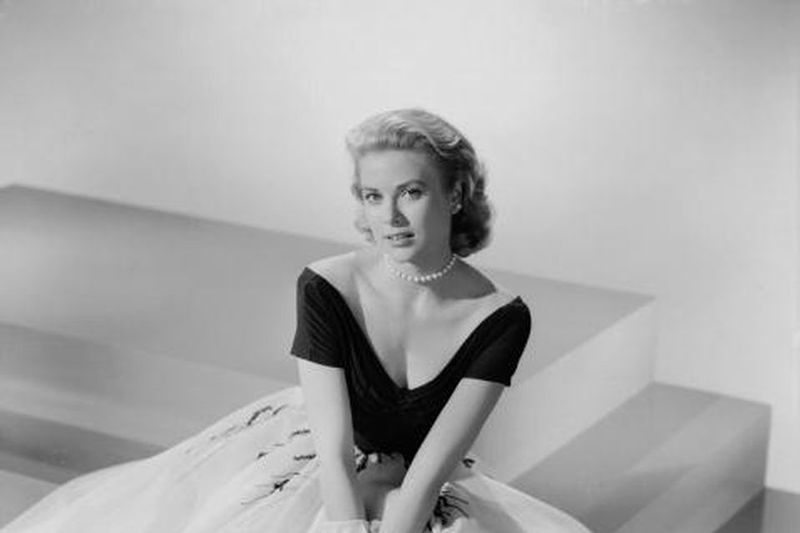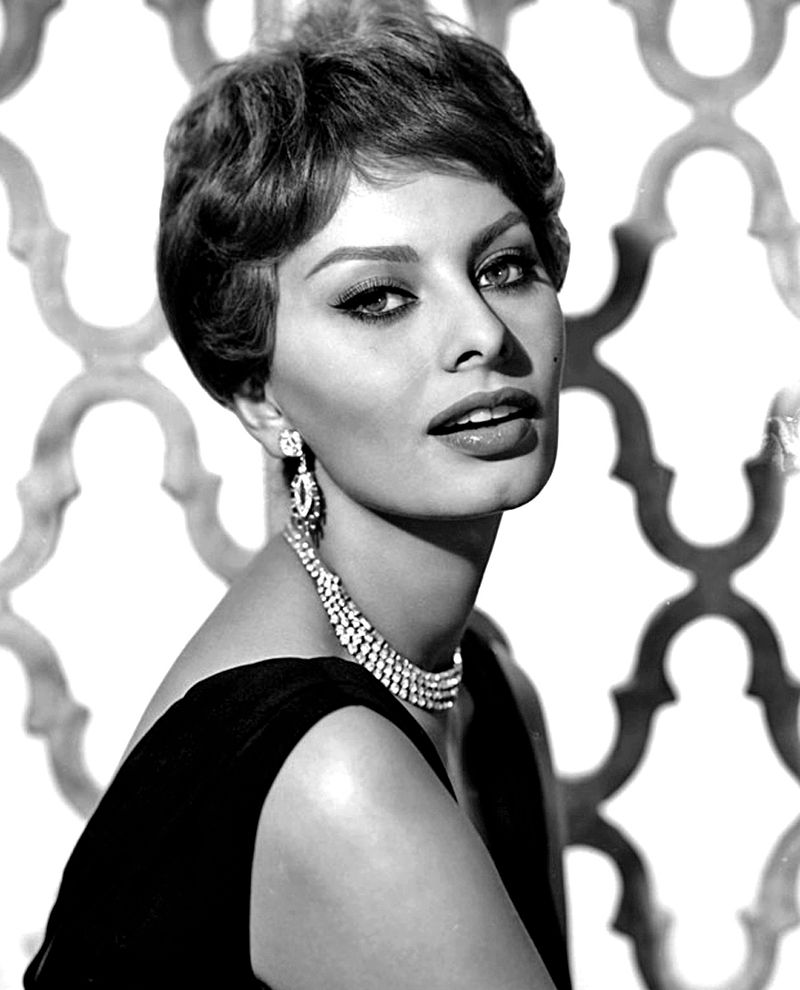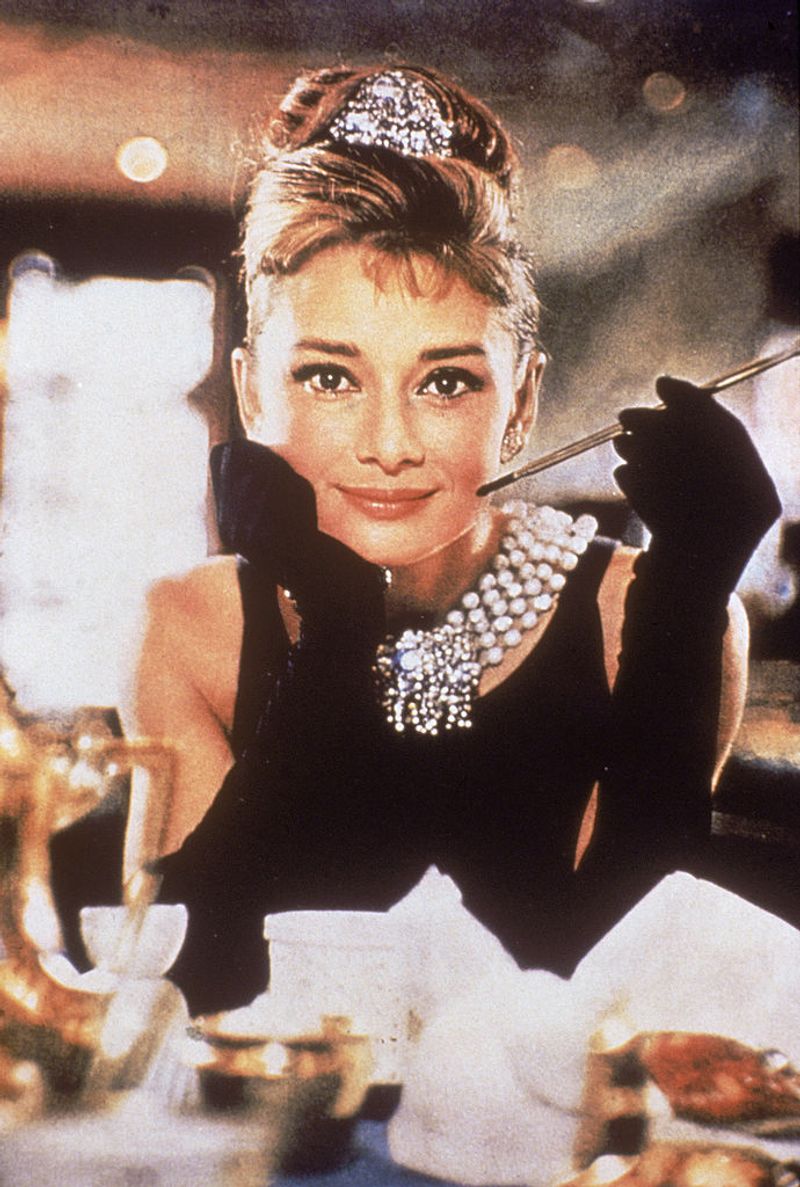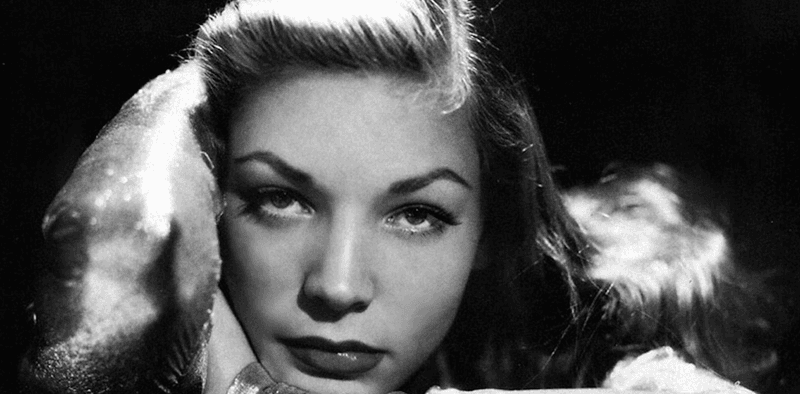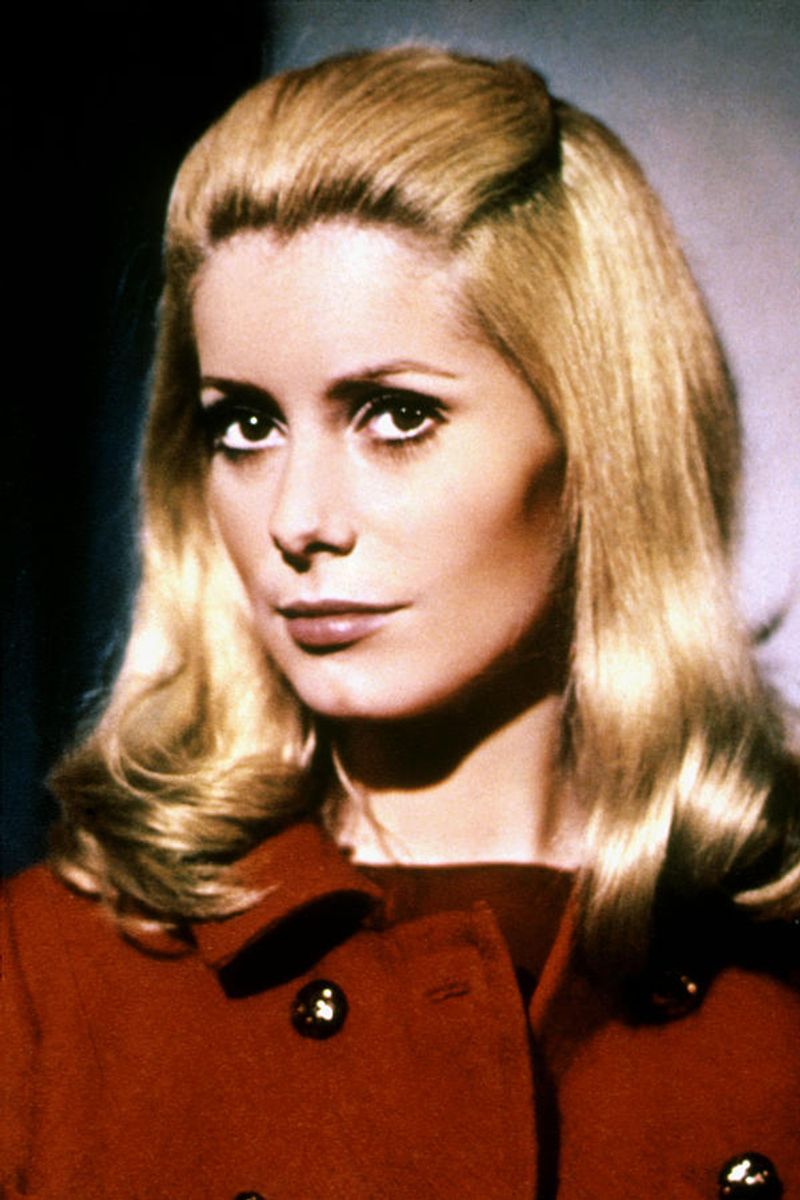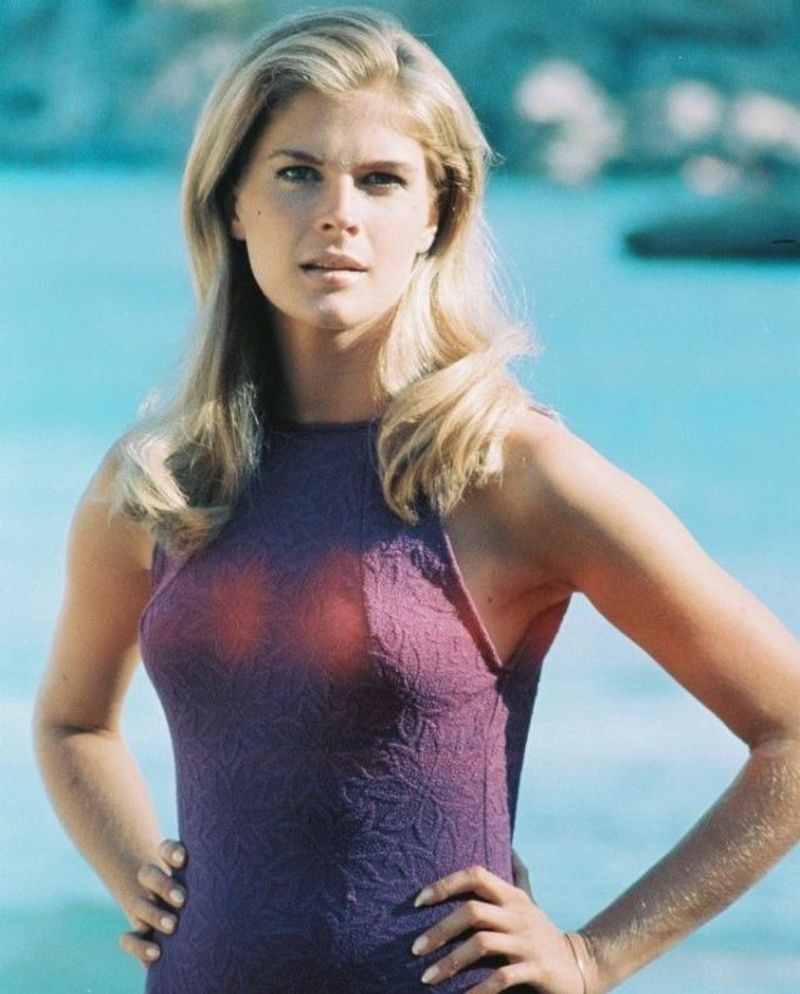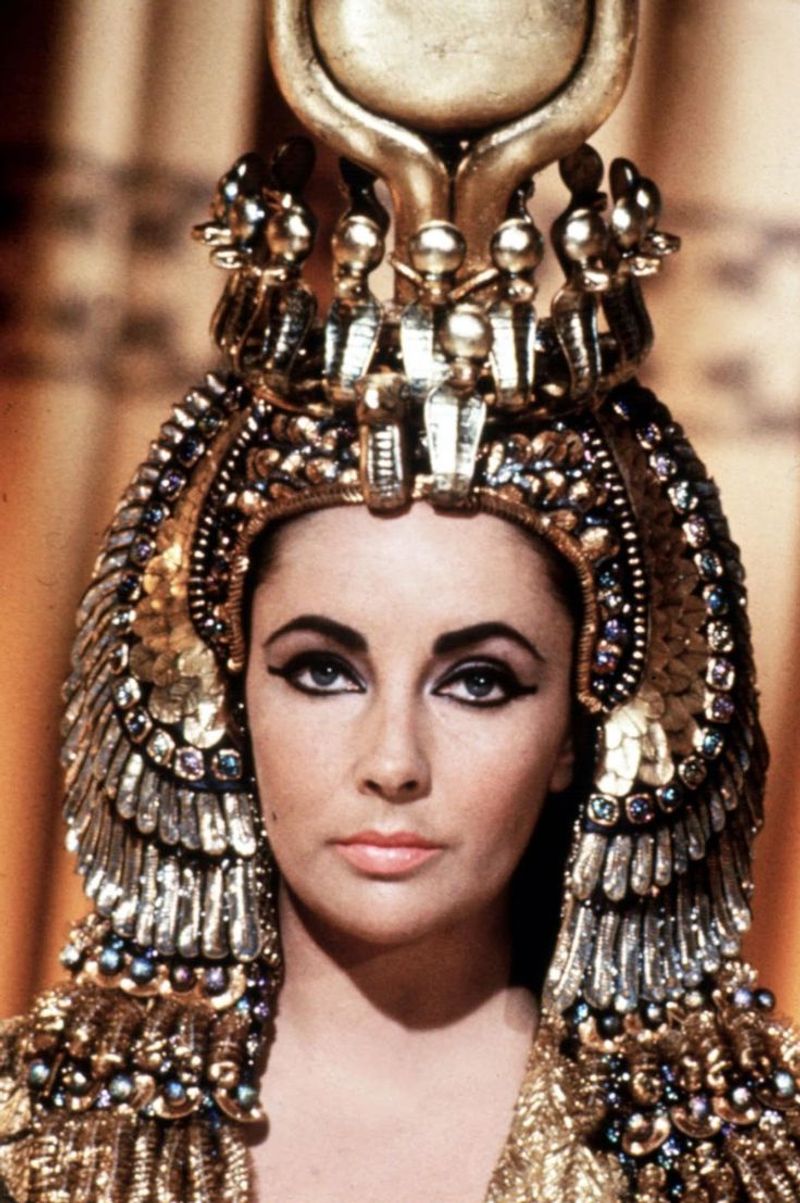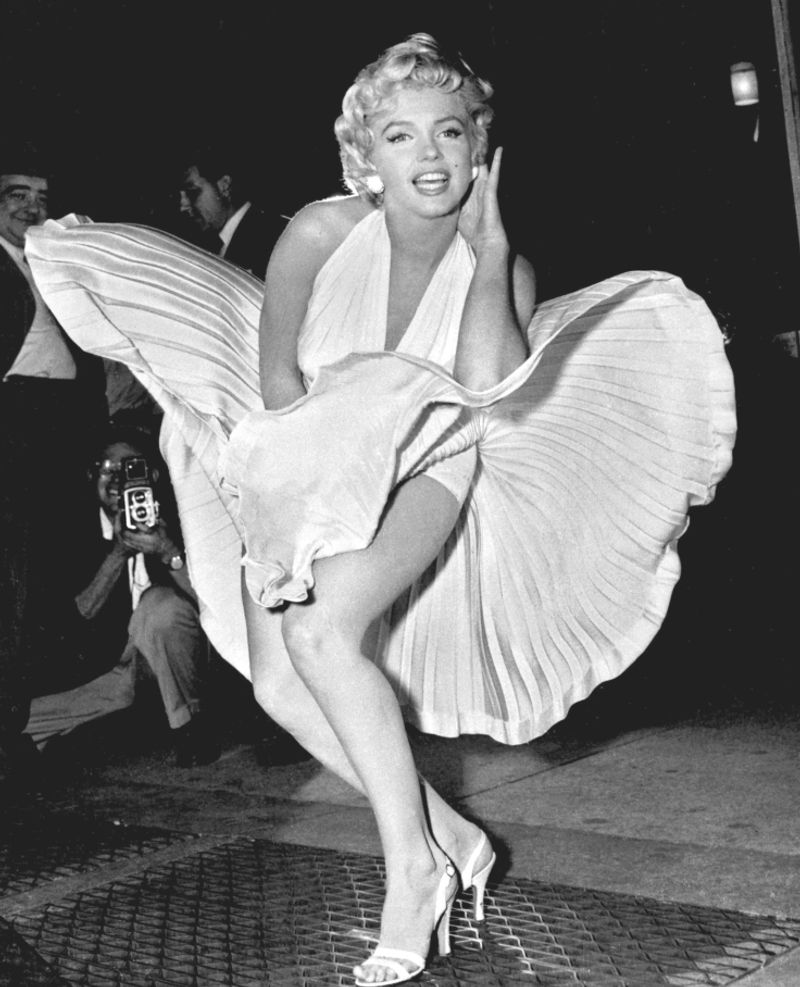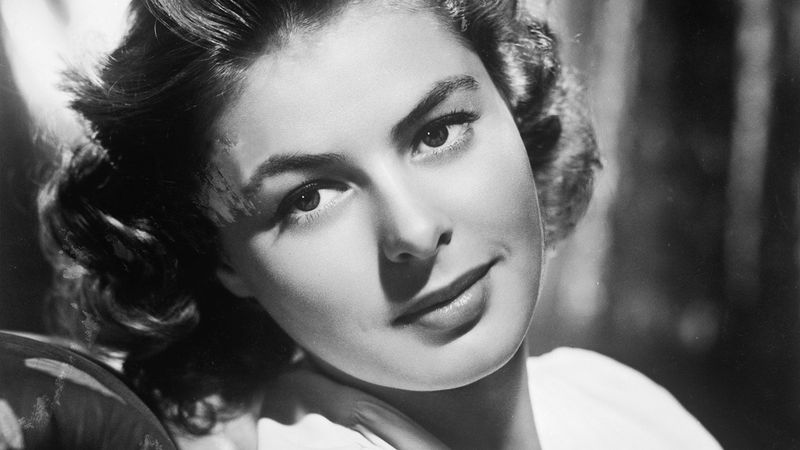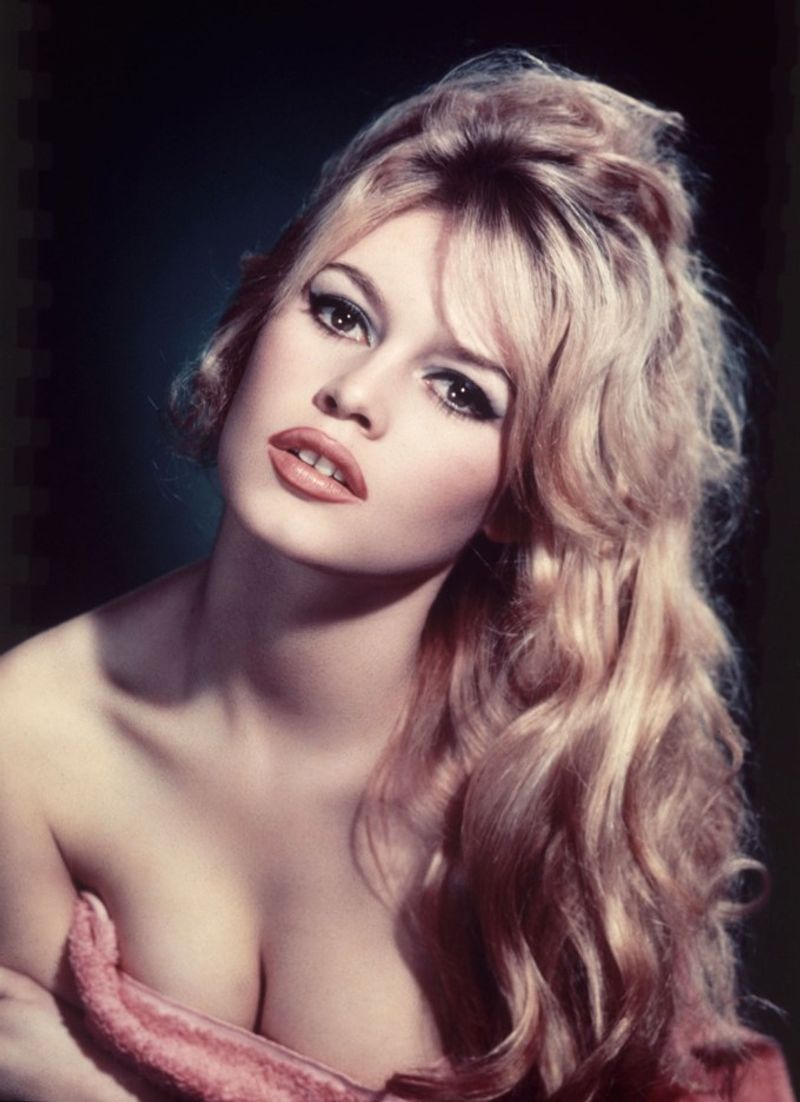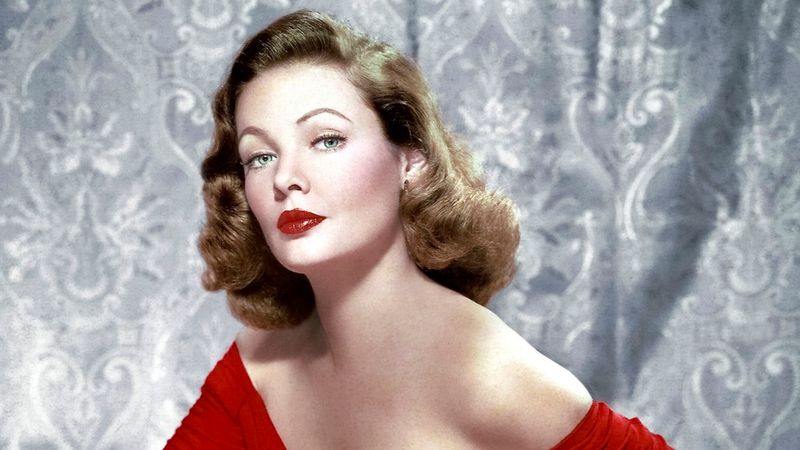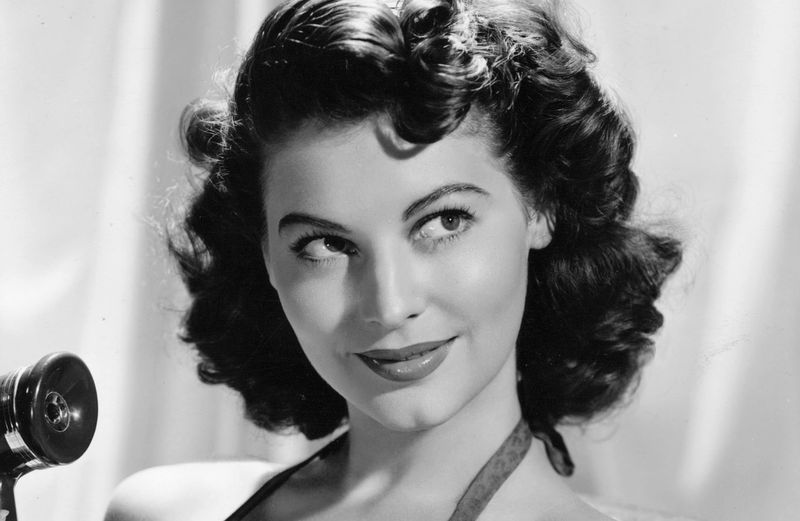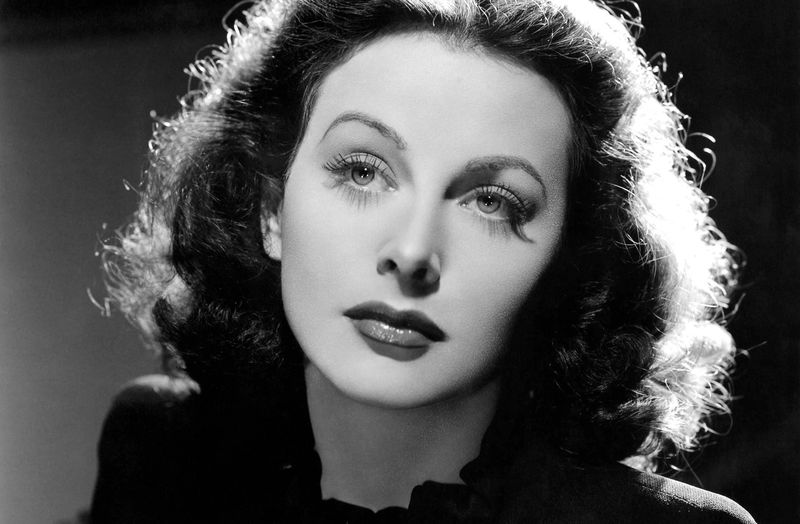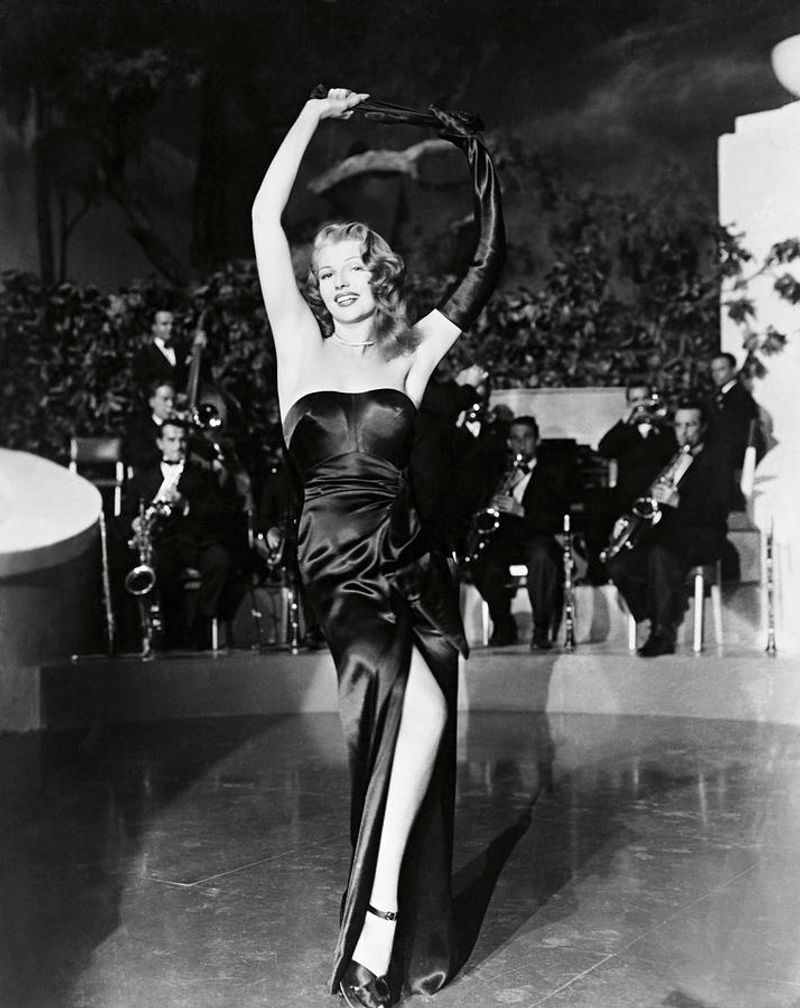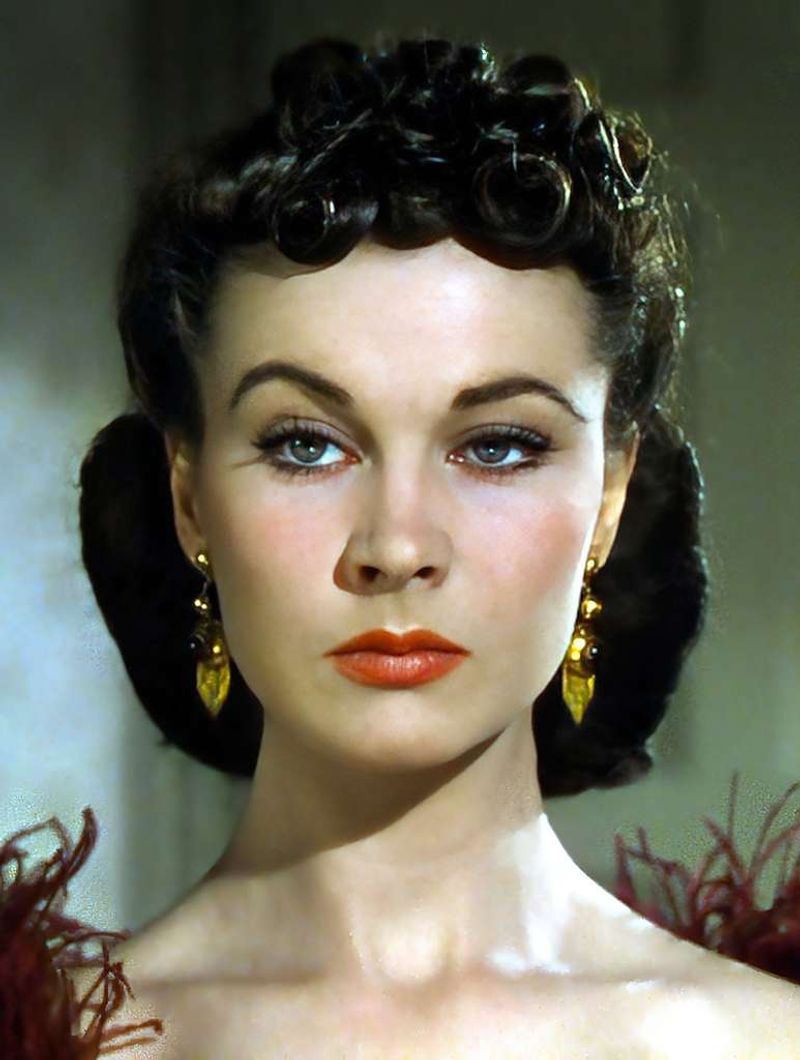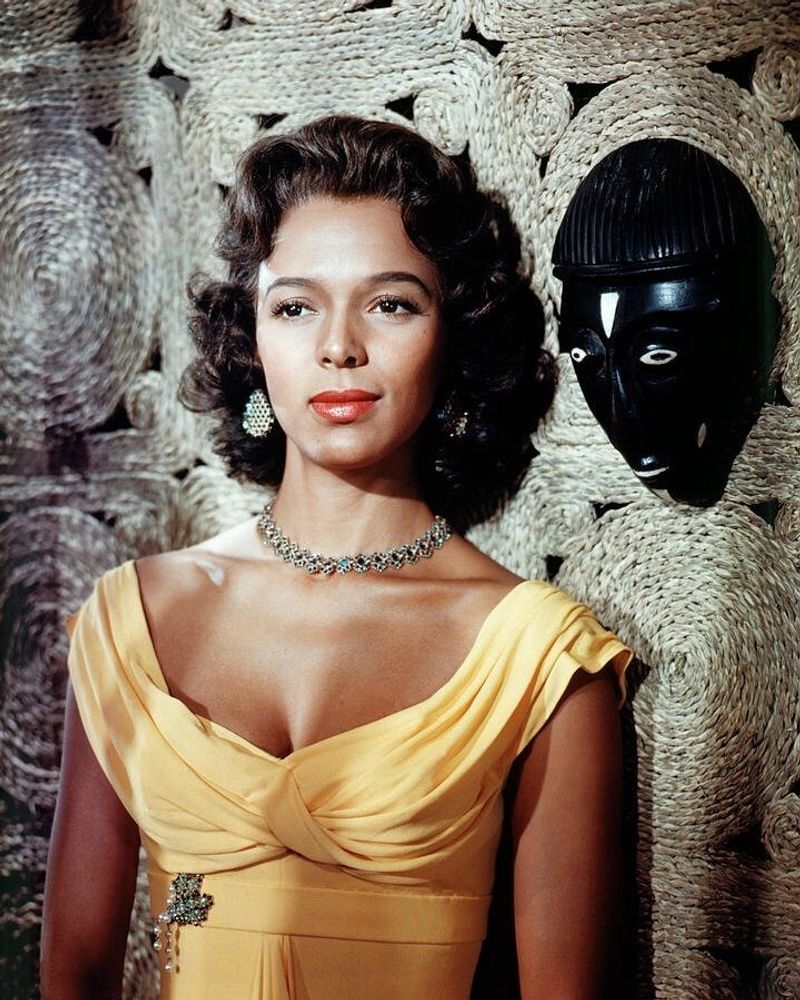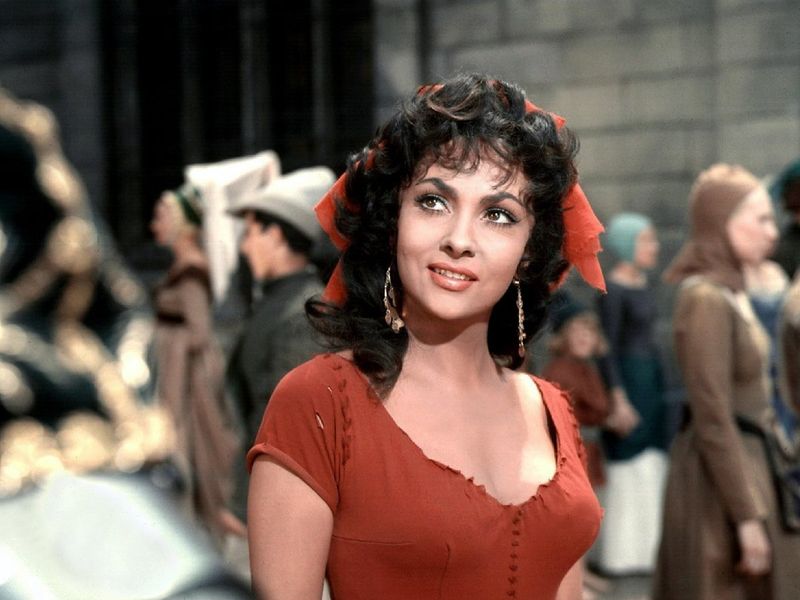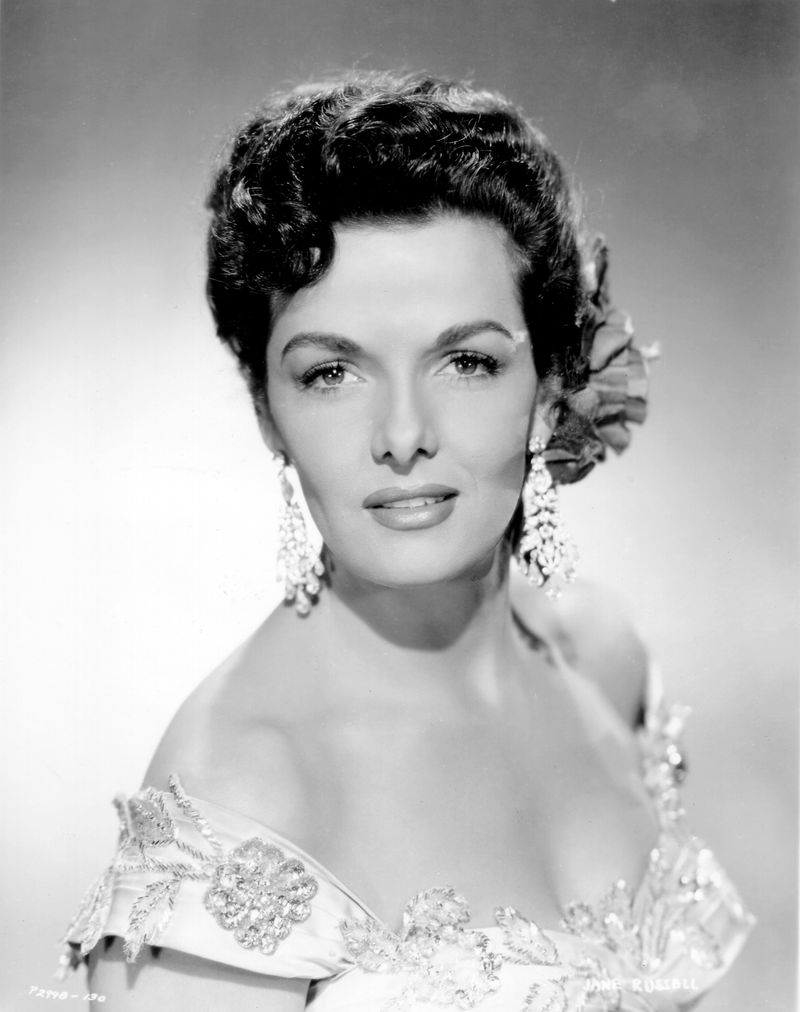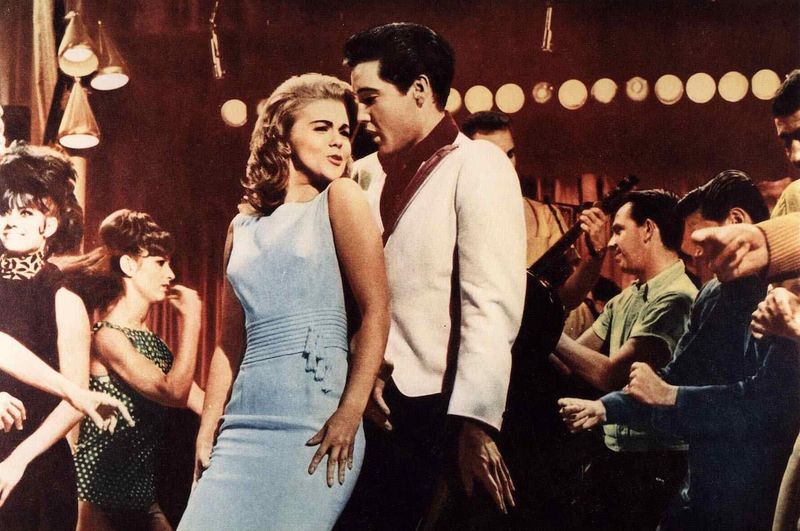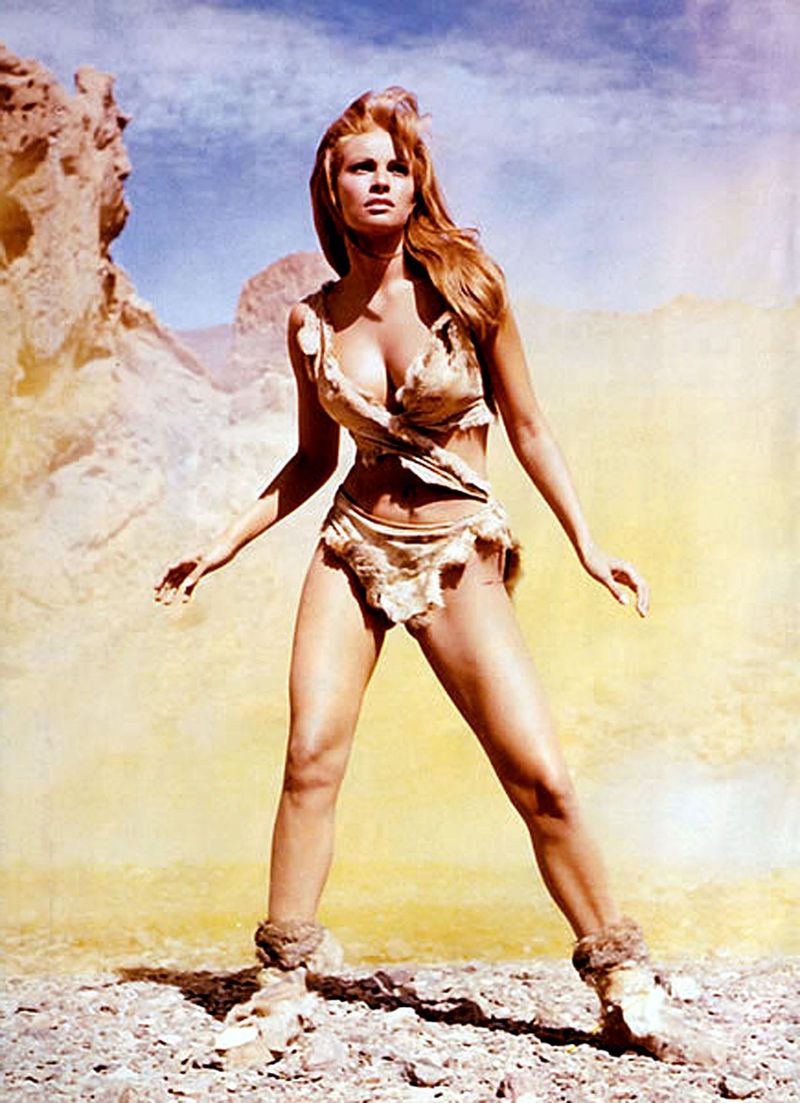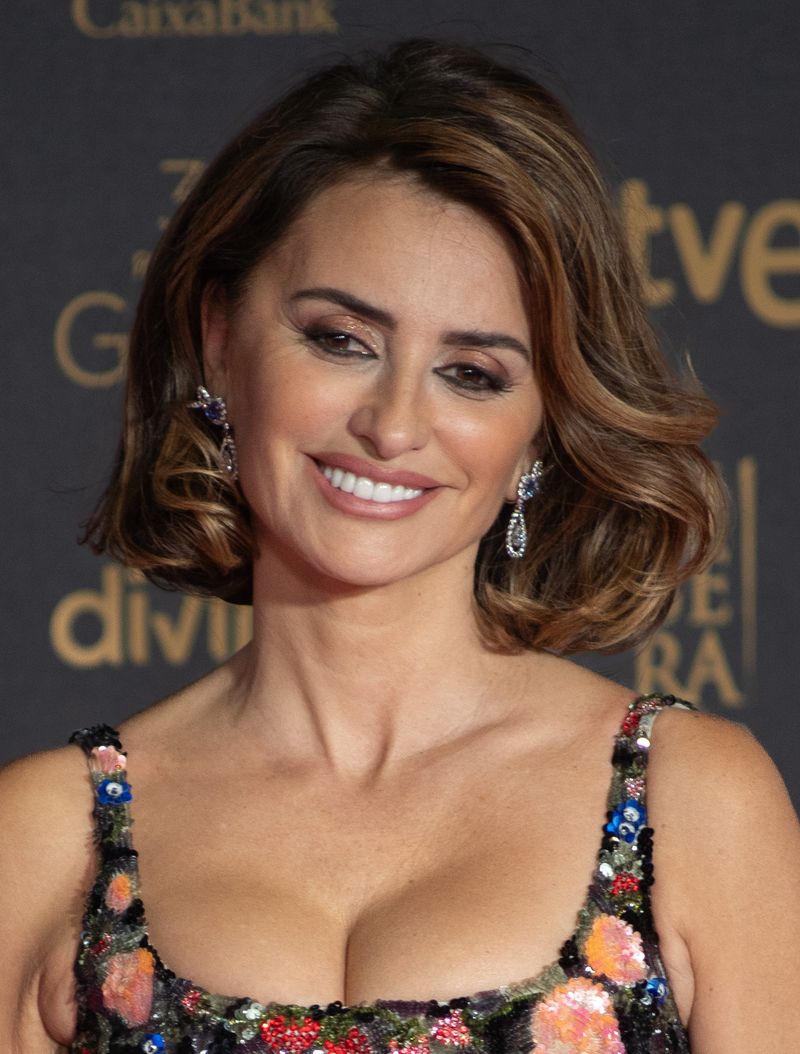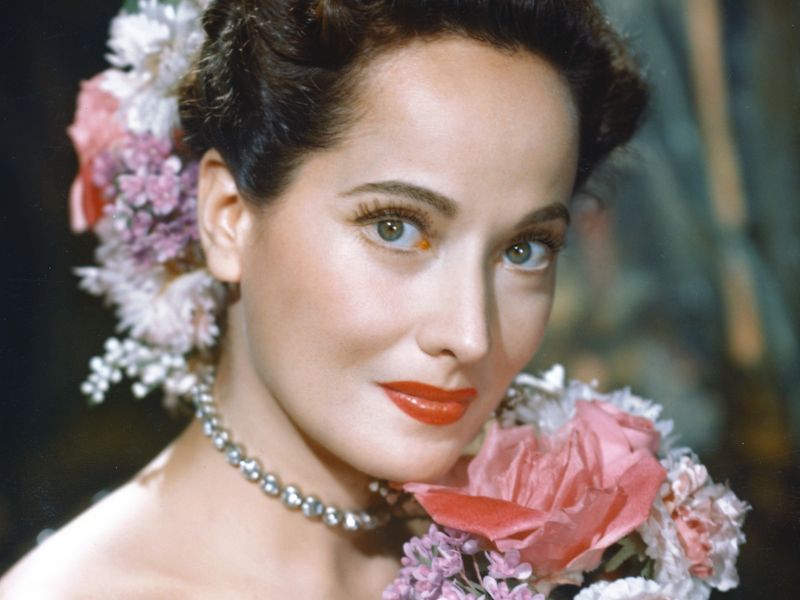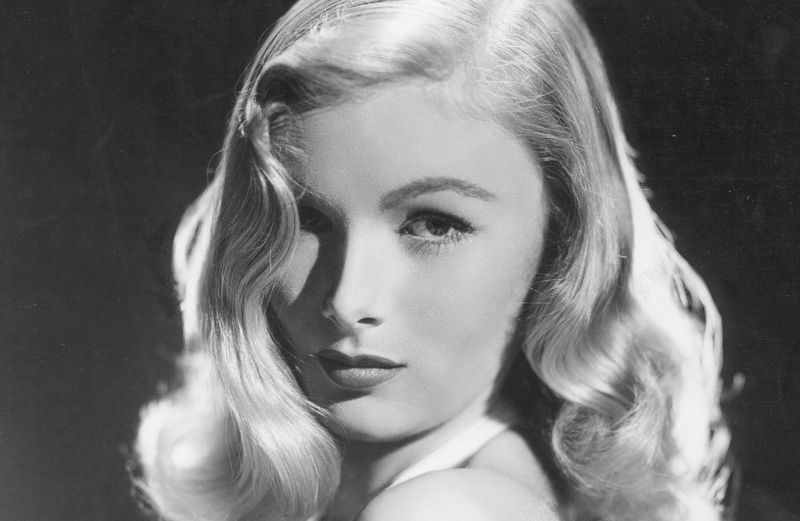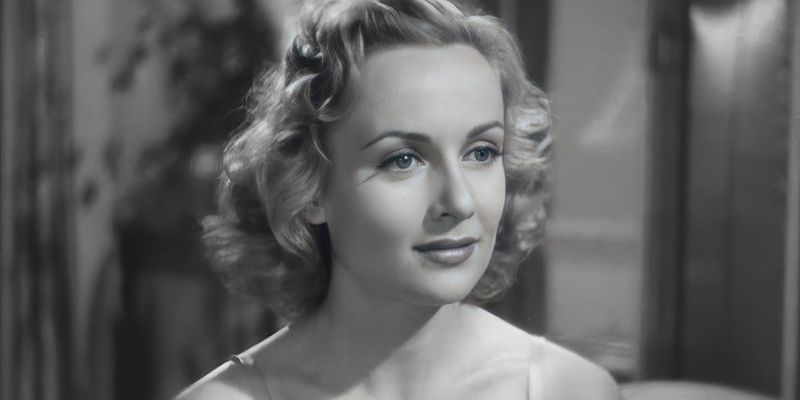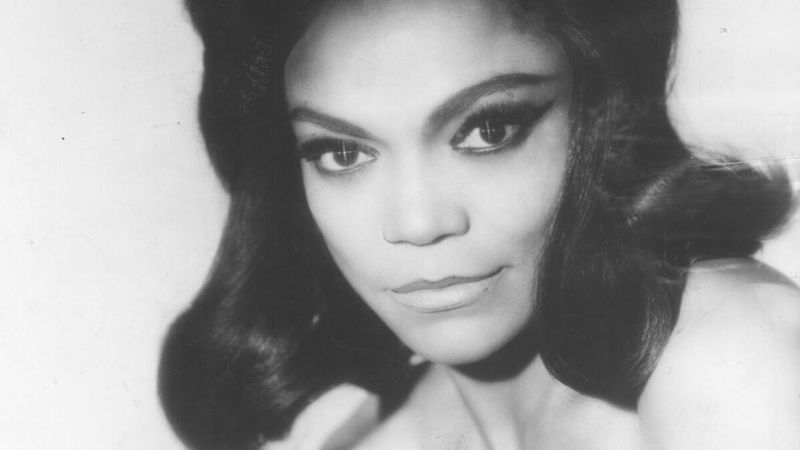The golden era of cinema gave us more than just memorable films—it blessed us with unforgettable faces that defined beauty for generations. These actresses weren’t simply pretty women; they were magnetic forces whose charisma leapt from the silver screen into cultural legend. Their beauty transcended trends, creating timeless standards of elegance that continue to inspire today’s stars and audiences alike.
1. Grace Kelly: The Princess of Perfection
Born into Philadelphia society, Grace Kelly transformed from American actress to genuine royalty, both on-screen and in real life. Her cool blonde elegance captivated Alfred Hitchcock, who showcased her sophisticated beauty in classics like “Rear Window” and “Dial M for Murder.”
Unlike the bombshells of her era, Kelly’s appeal came from her patrician features and poised demeanor—a combination of untouchable refinement and surprising warmth. When she married Prince Rainier III of Monaco in 1956, the world watched as the fairy tale became reality.
Despite retiring from film at just 26, her brief but brilliant career left an indelible mark on Hollywood’s beauty standards. Her style—simple yet immaculate—continues to influence fashion and film alike.
2. Sophia Loren: Italy’s Volcanic Venus
Emerging from post-war poverty in Naples, Sophia Loren broke every rule about what a leading lady should look like. Her voluptuous figure, prominent nose, and wide mouth defied Hollywood’s dainty standards, creating a new template for Mediterranean beauty that celebrated sensuality and strength.
Loren’s magnetic screen presence in films like “Marriage Italian Style” combined earthy humor with smoldering intensity. Unlike many beauties of her era, she refused Hollywood’s demands to alter her appearance, proudly maintaining her distinctive features and curvaceous silhouette.
Her famous quote—”Everything you see, I owe to spaghetti”—captured her refreshing authenticity. Even into her 80s, she remains the embodiment of Italian glamour, proving that true beauty only deepens with time.
3. Audrey Hepburn: Elfin Enchantress
With her doe eyes and swan-like neck, Audrey Hepburn rewrote beauty standards for a generation raised on curvy blondes. The Belgian-born actress brought ballet-trained grace to every movement, creating an ethereal presence unlike anything Hollywood had seen before.
Her gamine charm in “Roman Holiday” won hearts and an Oscar, but it was “Breakfast at Tiffany’s” that immortalized her as a style icon. That little black dress, those oversized sunglasses—Hepburn’s Holly Golightly remains the template for sophisticated chic decades later.
What made her truly beautiful, however, was the luminous humanity that shone through her performances. In her later years, this inner light found expression in her tireless UNICEF work, proving her beauty ran far deeper than those unforgettable cheekbones.
4. Lauren Bacall: The Look That Launched Legends
At just 19, Lauren Bacall sizzled onto screens with a sideways glance that would become her trademark. “The Look”—head lowered, eyes upward—was born from nervousness during her first screen test but became cinema’s most seductive gaze.
Her smoky voice and feline confidence in “To Have and Have Not” instantly established her as film noir’s quintessential femme fatale. Unlike many screen sirens, Bacall’s beauty wasn’t about perfection but attitude—a knowing intelligence combined with languid grace.
Her real-life romance with co-star Humphrey Bogart added mythic dimensions to her appeal. Even as she aged, Bacall maintained that distinctive blend of sophistication and sensuality, proving that true allure isn’t about youth but about owning every inch of who you are.
5. Catherine Deneuve: Glacial French Goddess
Often called the most beautiful woman in the world during the 1960s, Catherine Deneuve embodied French cinema’s cool, intellectual sensuality. Her blonde perfection in “The Umbrellas of Cherbourg” established her as Europe’s answer to Grace Kelly—but with a distinctly Gallic edge.
Unlike Hollywood’s emotional actresses, Deneuve’s beauty came wrapped in mystery and restraint. Her porcelain features revealed little while suggesting depths beneath. This enigmatic quality made her ideal for Luis Buñuel’s surrealist masterpiece “Belle de Jour,” where she played a bourgeois housewife with secret desires.
As the face of Chanel No. 5 and later her own perfume, Deneuve became synonymous with French elegance. Even now, she represents a sophisticated beauty that values intelligence and poise over mere youth.
6. Candice Bergen: All-American Sophisticate
Before becoming a television icon as Murphy Brown, Candice Bergen was Hollywood’s ultimate WASP princess. The daughter of ventriloquist Edgar Bergen, she parlayed her patrician blonde beauty and razor-sharp wit into both modeling and acting success.
Unlike many beauties of her era, Bergen projected intelligence alongside her stunning looks. Her performances in “Carnal Knowledge” and “The Sand Pebbles” revealed layers beneath the perfect façade. Magazine editors adored her photogenic features—those high cheekbones, clear blue eyes, and dazzling smile made her a Vogue favorite.
What set Bergen apart was her refusal to be just a pretty face. Her beauty came with brains and biting humor, a combination that allowed her career to evolve from ingénue to comedic powerhouse as she aged gracefully in the public eye.
7. Elizabeth Taylor: Violet-Eyed Enchantress
Elizabeth Taylor’s beauty was almost supernatural—those famous violet eyes, framed by double rows of eyelashes (a genetic mutation), seemed to pierce the screen. Born with a rare condition that gave her eyes their unique color, Taylor was literally one in a billion.
Her lush beauty evolved from the innocent charm of “National Velvet” to the volcanic sensuality of “Cat on a Hot Tin Roof” and the imperial grandeur of “Cleopatra.” Unlike many screen goddesses, Taylor’s allure was earthy and passionate rather than cool or remote. Her well-documented love life—eight marriages, including twice to Richard Burton—only enhanced her reputation as a woman of enormous appetites.
Even in her later years, battling health problems, Taylor maintained that magnetic quality that made her the last great star of Hollywood’s golden age.
8. Marilyn Monroe: The Definitive Blonde Bombshell
Transformed from brunette factory worker Norma Jeane Baker into platinum phenomenon Marilyn Monroe, she became the 20th century’s definitive sex symbol. Her hourglass figure—reportedly 36-24-36—set an impossible standard, while her breathy voice and wide-eyed vulnerability created a contradictory mix of innocence and raw sexuality.
Unlike many screen beauties, Monroe’s appeal wasn’t about perfection but about movement—the famous wiggle, the thrown-back head when laughing. She understood her visual impact perfectly, once noting, “I don’t mind living in a man’s world as long as I can be a woman in it.”
The tragic circumstances of her death at 36 only mythologized her beauty further. Decades later, Monroe remains the template against which all screen goddesses are measured—the ultimate blonde in the ultimate red dress.
9. Ingrid Bergman: Luminous Natural Beauty
In an era of heavily made-up glamour girls, Ingrid Bergman’s fresh-faced naturalism was revolutionary. The Swedish actress arrived in Hollywood already a star in Europe, bringing with her a Scandinavian approach to beauty that emphasized health and authenticity over artifice.
Her luminous performance in “Casablanca” opposite Humphrey Bogart showcased her unique appeal—those intelligent eyes, that gentle smile, the emotional transparency that made audiences fall in love alongside her leading men. Unlike many Hollywood stars, Bergman refused to pluck her eyebrows or cap her teeth, maintaining her natural appearance despite studio pressure.
Her career survived even the scandal of her affair with Roberto Rossellini, which temporarily made her persona non grata in America. Bergman’s beauty, like her talent, was timeless—as powerful in her final films as in her earliest Swedish pictures.
10. Brigitte Bardot: Wild Child of European Cinema
Before Brigitte Bardot, European beauties were elegant and restrained. After her explosive debut in “And God Created Woman,” they could be untamed, sensual, and rebellious. The French teenager-turned-international-sex-symbol rewrote beauty rules with her tousled blonde mane, heavy eyeliner, and famous pout.
Unlike Hollywood’s manufactured starlets, Bardot’s appeal was earthy and spontaneous. She danced barefoot, wore simple clothes that became instant trends, and projected a free-spirited sexuality that captured the changing attitudes of the 1950s and 60s. Her bikini-clad image from the Cannes Film Festival became one of cinema’s most iconic photographs.
After retiring at just 39, Bardot transformed her passionate nature toward animal rights activism. Yet her beauty legacy endures—the “Bardot look” remains a perennial reference point for designers and makeup artists worldwide.
11. Gene Tierney: The Perfect Face
Acclaimed director Josef von Sternberg once declared Gene Tierney “unquestionably the most beautiful woman in movie history.” With her high cheekbones, almond-shaped eyes, and distinctive overbite (which she refused to correct), Tierney possessed a face that photographers considered flawless from any angle.
Her mysterious beauty was immortalized in the noir classic “Laura,” where she played a woman so beautiful that a detective falls in love with her portrait. In Technicolor films like “Leave Her to Heaven,” her emerald eyes and perfect features took on an almost supernatural quality that matched her character’s dangerous obsessions.
Tragically, Tierney’s life didn’t match her perfect appearance—she battled mental illness for years. This contrast between her flawless exterior and internal struggles only adds poignancy to her screen performances, where beauty often masked complexity.
12. Ava Gardner: The World’s Most Beautiful Animal
MGM’s famous slogan for Ava Gardner—”The World’s Most Beautiful Animal”—captured the raw, untamed quality that set her apart from more polished stars. Discovered when a photographer displayed her portrait in a New York window, the North Carolina country girl possessed a smoldering sensuality that couldn’t be taught.
Her olive skin, raven hair, and hourglass figure made her perfect for roles like the barefoot Spanish dancer in “The Barefoot Contessa.” Unlike manufactured starlets, Gardner’s beauty had an authentic, earthy quality—she was comfortable in her skin and unapologetic about her passionate nature.
Her tumultuous marriage to Frank Sinatra inspired some of his greatest love songs. Even as she aged, refusing plastic surgery and embracing her natural evolution, Gardner maintained that magnetic quality that made directors like John Huston call her “the most beautiful woman who ever lived.”
13. Hedy Lamarr: The Most Beautiful—And Brilliant—Woman in Film
When Louis B. Mayer introduced Austrian actress Hedy Lamarr to Hollywood, he called her simply “the most beautiful woman in the world.” With her perfectly symmetrical face, snow-white skin, and raven hair, Lamarr’s exotic beauty seemed almost mathematically perfect—which proved ironically appropriate.
While starring in films like “Samson and Delilah” and “Algiers,” Lamarr was secretly developing frequency-hopping technology to help the Allies during World War II. This invention later became fundamental to Bluetooth, GPS, and WiFi technology. Her extraordinary mind was hidden behind what co-star Charles Boyer called “a face that belonged on the ceiling of a cathedral.”
Though Hollywood valued only her appearance, time has revealed Lamarr’s true legacy—a beauty whose brains changed the modern world in ways that transcended her stunning screen presence.
14. Rita Hayworth: The Love Goddess
Born Margarita Cansino to a Spanish dancer father, Rita Hayworth underwent a painful transformation to become Hollywood’s ultimate “Love Goddess.” Studio executives had her hairline electrolyzed to appear less ethnic and her naturally black hair dyed auburn—creating the signature look that would make her famous.
Her five-second hair toss in “Gilda” became one of cinema’s most iconic moments. That single movement—flipping back her glorious red mane while wearing a strapless black gown—captured the essence of postwar glamour and female sexuality. Her pinup image was so beloved by WWII soldiers that it was reportedly pasted onto the first atomic bomb.
Behind the bombshell image was a talented dancer who matched Fred Astaire step for step. Hayworth’s beauty combined technical precision with smoldering passion—a combination that made her Hollywood’s ultimate fantasy woman.
15. Vivien Leigh: Fragile Perfection
Vivien Leigh’s delicate beauty seemed almost too perfect for this world—which made her ideal casting as the doomed heroines Scarlett O’Hara and Blanche DuBois. Her heart-shaped face, with its perfect symmetry and enormous eyes, photographed like a dream in both black-and-white and early Technicolor.
Though British by birth, Leigh convinced the world she was a Southern belle in “Gone with the Wind,” using her extraordinary beauty to convey both steely determination and vulnerable femininity. Unlike many screen beauties, Leigh was also a formidable actress, winning two Oscars despite making relatively few films.
Her fragile loveliness mirrored her fragile mental health—she battled bipolar disorder throughout her life. This connection between her ethereal appearance and inner turmoil gave her performances a haunting quality that transcended mere prettiness.
16. Dorothy Dandridge: Groundbreaking Goddess
As Hollywood’s first Black leading lady to receive an Academy Award nomination, Dorothy Dandridge’s beauty broke barriers while captivating audiences. Her flawless skin, delicate features, and graceful physique made her a vision in films like “Carmen Jones” and “Porgy and Bess.”
Unlike white actresses of her era, Dandridge faced the double burden of being both objectified for her beauty and limited by her race. Despite these constraints, her magnetic presence in “Carmen Jones” proved so powerful that even Otto Preminger, her director and later lover, couldn’t resist her charm.
Tragically, Hollywood had few roles worthy of her talents and beauty. Her early death at 42 cut short a career that had barely begun to realize its potential. Yet her pioneering presence opened doors for generations of Black actresses who followed in her elegant footsteps.
17. Gina Lollobrigida: Italy’s Magnificent Sculpture
Before becoming an actress, Gina Lollobrigida studied sculpture—fitting for a woman whose own form would be celebrated as a work of art. Nicknamed “La Lollo,” her voluptuous figure and fiery temperament made her Italy’s answer to Marilyn Monroe, though with a Mediterranean earthiness all her own.
Her beauty combined classical proportions with vibrant energy, making her perfect for roles in films like “Bread, Love and Dreams” and “Solomon and Sheba.” Humphrey Bogart, her co-star in “Beat the Devil,” famously quipped: “She makes Marilyn Monroe look like Shirley Temple.”
Unlike many screen beauties, Lollobrigida successfully transitioned to a second career as a photojournalist and sculptor. Her artistic eye—once the subject of countless photographs—proved equally adept behind the camera, demonstrating that her beauty was matched by her creative intelligence.
18. Jane Russell: The Bombshell With Perfect Architecture
Howard Hughes launched Jane Russell’s career specifically to showcase her spectacular figure, designing a special cantilever bra for her debut in “The Outlaw.” The film’s promotional materials—featuring Russell reclining in hay with her famous cleavage prominently displayed—became so controversial that the movie’s release was delayed for years.
Beyond her famous curves, Russell possessed a striking face with strong features and a sardonic expression that suggested she was in on the joke. This knowing quality made her the perfect foil for Marilyn Monroe in “Gentlemen Prefer Blondes,” where she played the smart, sassy brunette to Monroe’s ditzy blonde.
Russell handled her sex symbol status with remarkable good humor throughout her career. When asked about Hughes’ famous engineering feat, she quipped: “I never wore it. I stuffed the cups with tissues and pulled the straps over my shoulders.”
19. Ann-Margret: The Kitten With a Whip
Part innocent redhead, part feral sex kitten, Ann-Margret exploded onto screens in the 1960s as Elvis Presley’s most memorable leading lady. Her vibrant copper hair, pouty lips, and spectacular dancing abilities made her a unique presence—neither the girl next door nor the untouchable goddess, but something electrifyingly in between.
Her performance in “Viva Las Vegas” showcased her extraordinary physical energy and raw sensuality. Unlike many beautiful actresses, Ann-Margret was a genuine triple threat who could act, sing, and dance with equal skill. Her motorcycle-riding, snake-dancing Las Vegas stage shows became legendary for their combination of sexuality and danger.
While many sex symbols faded as they aged, Ann-Margret successfully transitioned to dramatic roles in films like “Carnal Knowledge,” proving her beauty was matched by genuine talent that endured long after her bombshell years.
20. Raquel Welch: Prehistoric Pinup Queen
A single image of Raquel Welch in a fur bikini from “One Million Years B.C.” transformed her overnight into the ultimate male fantasy. Despite having only three lines in the film, that iconic poster of her prehistoric pinup became one of the best-selling images of the 1960s, adorning countless bedroom walls and even playing a pivotal role in “The Shawshank Redemption.”
Welch’s beauty combined impossible proportions with a strong, athletic quality unusual for sex symbols of her era. Her mixed Bolivian and Anglo-American heritage gave her a unique look—exotic yet familiar—that appealed to audiences worldwide.
Unlike many sex symbols, Welch maintained strict control over her image, refusing nude scenes throughout her career. This strategic decision helped her transition to legitimate acting roles in films like “The Three Musketeers,” proving she was more than just a spectacular physique.
21. Penélope Cruz: Modern Mediterranean Masterpiece
Though more recent than many on this list, Penélope Cruz belongs among cinema’s timeless beauties for embodying the eternal appeal of Mediterranean allure. The Spanish actress combines classical features—those impossibly long eyelashes, full lips, and olive skin—with a fiery temperament that recalls earlier icons like Sophia Loren.
Her collaborations with Pedro Almodóvar in films like “Volver” showcase her ability to be simultaneously earthy and ethereal. Unlike many contemporary beauties, Cruz possesses a mature sensuality that grows more compelling with age, allowing her to play complex women rather than mere ingénues.
Her Oscar-winning performance in “Vicky Cristina Barcelona” (opposite then-husband Javier Bardem) proved that her beauty serves her art rather than limiting it. As one of cinema’s most captivating modern faces, Cruz carries forward the tradition of European screen goddesses for a new generation.
22. Merle Oberon: Exotic Mystery
With her almond eyes, high cheekbones, and luminous skin, Merle Oberon brought an exotic beauty to 1930s Hollywood that set her apart from her contemporaries. Born in India to an Anglo-Indian mother (a fact she concealed throughout her career), Oberon’s mixed heritage gave her a unique look that captivated audiences.
Her performance as Cathy in “Wuthering Heights” opposite Laurence Olivier cemented her status as one of cinema’s great beauties. A serious car accident in 1937 damaged her face, requiring careful lighting and heavy makeup for the remainder of her career—a challenge she overcame with remarkable grace.
Oberon’s beauty carried an air of mystery that extended to her personal life. Only after her death did the truth about her mixed-race background emerge, revealing the painful compromises required of non-white actresses during Hollywood’s golden age.
23. Veronica Lake: The Peek-a-Boo Blonde
Standing just 4’11” with a curtain of platinum hair falling over one eye, Veronica Lake created one of Hollywood’s most recognizable beauty signatures. Her “peek-a-boo” hairstyle became so popular during World War II that women working in factories copied it—prompting the government to ask Lake to change her style for safety reasons.
Her cool blonde beauty and petite frame made her the perfect film noir femme fatale in classics like “This Gun for Hire” and “The Blue Dahlia.” Unlike many screen goddesses, Lake projected intelligence alongside beauty—a sardonic quality that made her particularly effective opposite Alan Ladd, another diminutive star with whom she frequently worked.
Tragically, alcoholism derailed her career by the late 1940s. Yet her influence endured—from Kim Basinger’s L.A. Confidential homage to Jessica Rabbit’s animated curves, Lake’s distinctive look continues to inspire.
24. Carole Lombard: Glamour With a Goofy Twist
Hollywood’s queen of screwball comedy, Carole Lombard combined knockout blonde beauty with a tomboy’s physical comedy skills and a sailor’s vocabulary. Her willingness to look ridiculous for a laugh—while never sacrificing her glamorous appearance—made her uniquely beloved among the screen goddesses of the 1930s.
In classics like “My Man Godfrey” and “Nothing Sacred,” Lombard proved that beauty could be both elegant and approachable. Unlike many glamour queens, she was famous for her down-to-earth personality, preferring casual clothes and practical jokes to star treatment when cameras weren’t rolling.
Her tragic death at 33 in a plane crash while returning from a war bond tour cut short one of Hollywood’s most promising careers. Her husband Clark Gable never fully recovered from losing the woman whose beauty was matched only by her irrepressible spirit.
25. Eartha Kitt: The Original Catwoman
With her feline features, purring voice, and lithe dancer’s body, Eartha Kitt embodied sensuality decades before her iconic turn as Catwoman in the 1960s Batman series. Her exotic beauty—a blend of African American, Cherokee, and white heritage—gave her a distinctive look that defied categorization in segregated Hollywood.
Kitt’s performances combined sultry elegance with playful humor, most memorably in her recording of “Santa Baby.” Unlike many beauties, her appeal wasn’t about conventional prettiness but about presence—those hypnotic eyes, expressive mouth, and graceful movements made her magnetic on stage and screen.
Her beauty remained remarkably unchanged throughout her long career. Even in her 70s, Kitt maintained the same sleek physique and magnetic energy that had made her a star decades earlier, proving that true charisma transcends the usual limitations of age.
